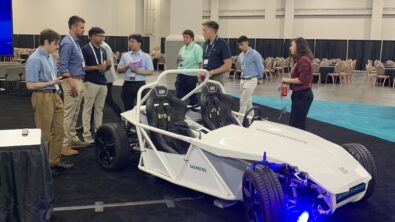Three, two, one… Go for Gold Team Recoil Racing!
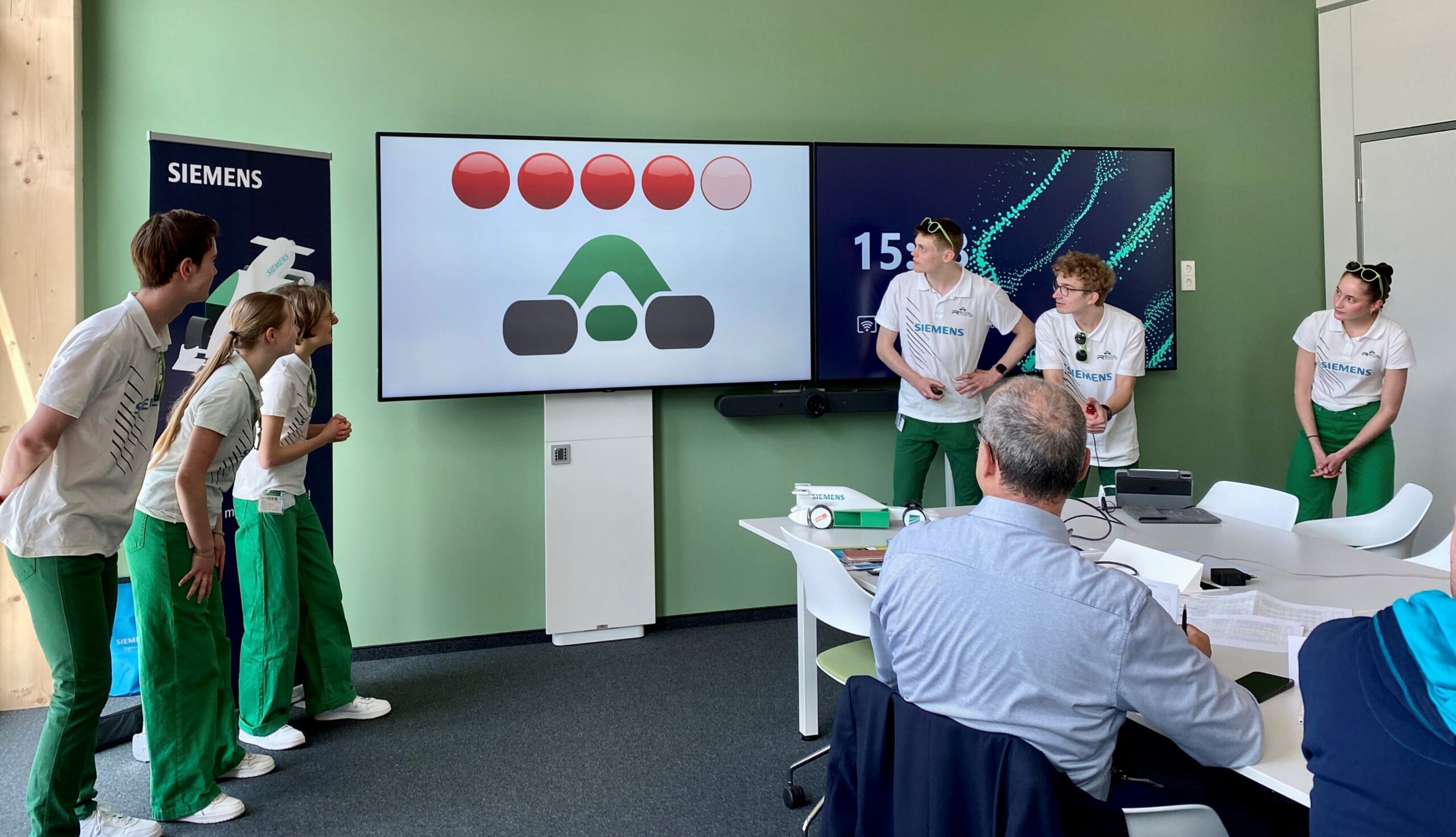
How six students from Erlangen aim to win the F1 in Schools World Championship in September in Singapore and what they learned on their way so far.
This contest is not only about CAD, but also not about marketing, team building, personal growth, speed, engineering, technology, or going beyond someone’s personal comfort zone – no, it includes all of these components. We are talking about F1 in Schools competition, one of the most renowned academic challenges worldwide, where high school students from all over the world compete in building the fastest mini-racing car.
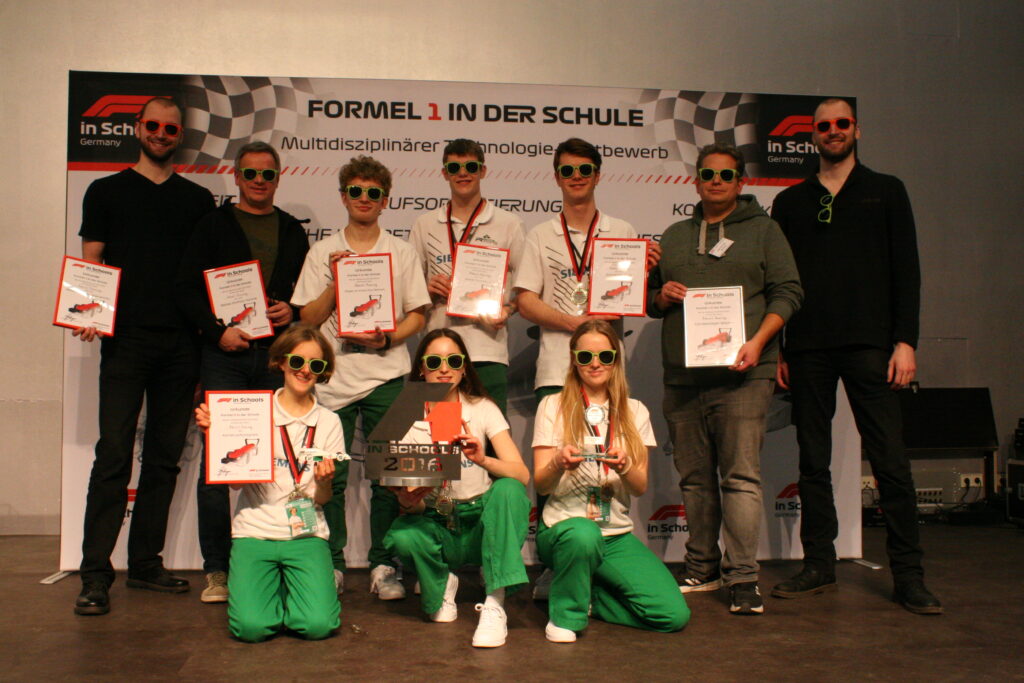

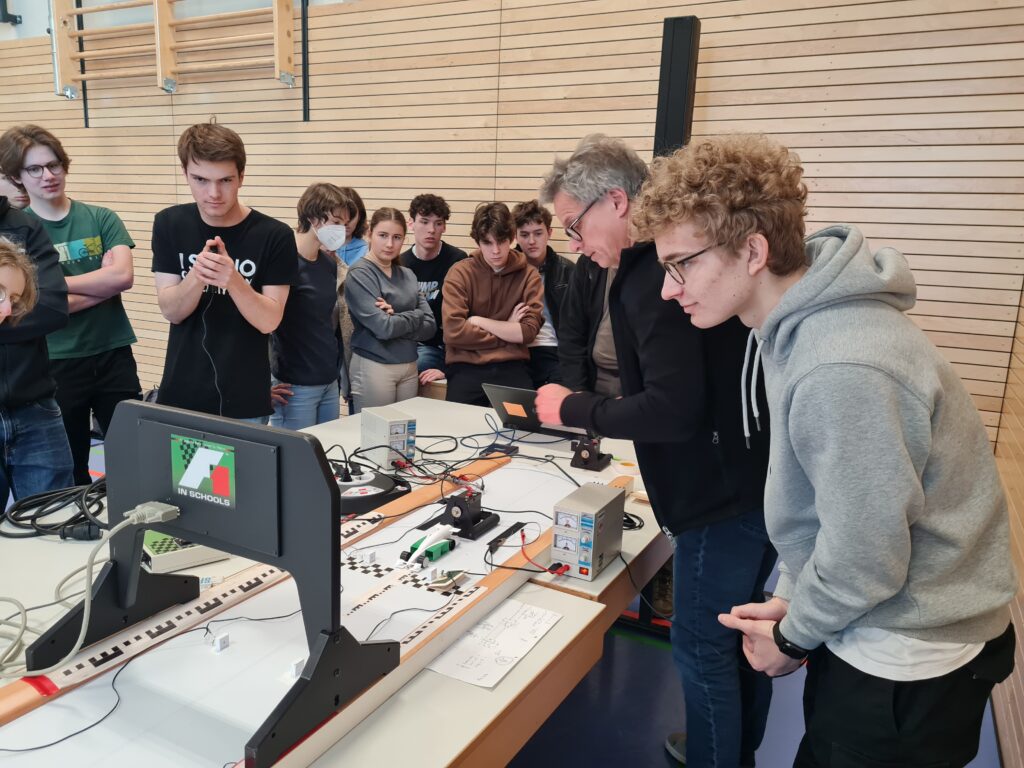
F1 in schools – a well-established worldwide STEM contest
“The competition was first introduced in the UK in 1999. The F1 in Schools World Record was set in 2016 by the Australian team Infinitude and is 0.916 seconds,“ says Armin Gittinger, Owner, and Managing Director of F1 in Schools gGmbH Germany, partially supporting the contest also in Austria and Switzerland. “Meanwhile the cars even got a bit slower due to rule changes in the design requirements, as we want the cars to stay in line with the big Formula One Competition. One very current example: the new vehicles will have a halo like F1 race cars. “Also a “virtual load” was introduced years ago to prevent catamaran design vehicles. This tends to make vehicles slower, but in the end, we are talking about tenths of a second and not seconds.”

One of the most promising teams to win the contest this year is team Recoil Racing from the Marie-Therese-Highschool, Erlangen. Finn, Amelie, Timon, Caro, Marleen & Benno already won the local South German Championship on February 11 this year at the Graf-Rasso Highschool in Fürstenfeldbruck, Bavaria, and are now heading to the national F1 in Schools finals at the Customer Service Center of Mercedes-Benz AG in Sindelfingen on May 13th. “The contest is very popular at our school. Altogether 26 students applied to participate this year”, says Martin Sauer, teacher for Mathematics at Marie-Therese. “After a couple of weeks, the class voted democratically which 6 students would be part of the team.” But still, many more students are working in the background to make the big dream of winning the finals in Singapore in September come true, making pictures, programming some instructions on Arduino, or prepping the wind canal. In the end, everyone knows this whole project is a huge team effort.
Within the last eight months, the students learned a lot. The whole experience will change their lives forever regarding proficiency, presenting skills, teamwork capabilities, personal confidence, and stress resilience. One main learning is probably to use unknown tools and software to gain insights and present results more appealingly. All for building the fastest car of the contest. “Our last model hit the finishing line in 1,083 seconds”, says Marleen, responsible for modeling the car in CAD at Recoil Racing. For the race in Sindelfingen, they aim under 1,075 seconds. A huge pressure as also the design was undertaken a thorough evaluation. “Right now, we just tested everything in theory”, says teacher Axel Fischer. “This means a huge excitement for the students. Next week, we will see at the racetrack if our strategy pays off.”
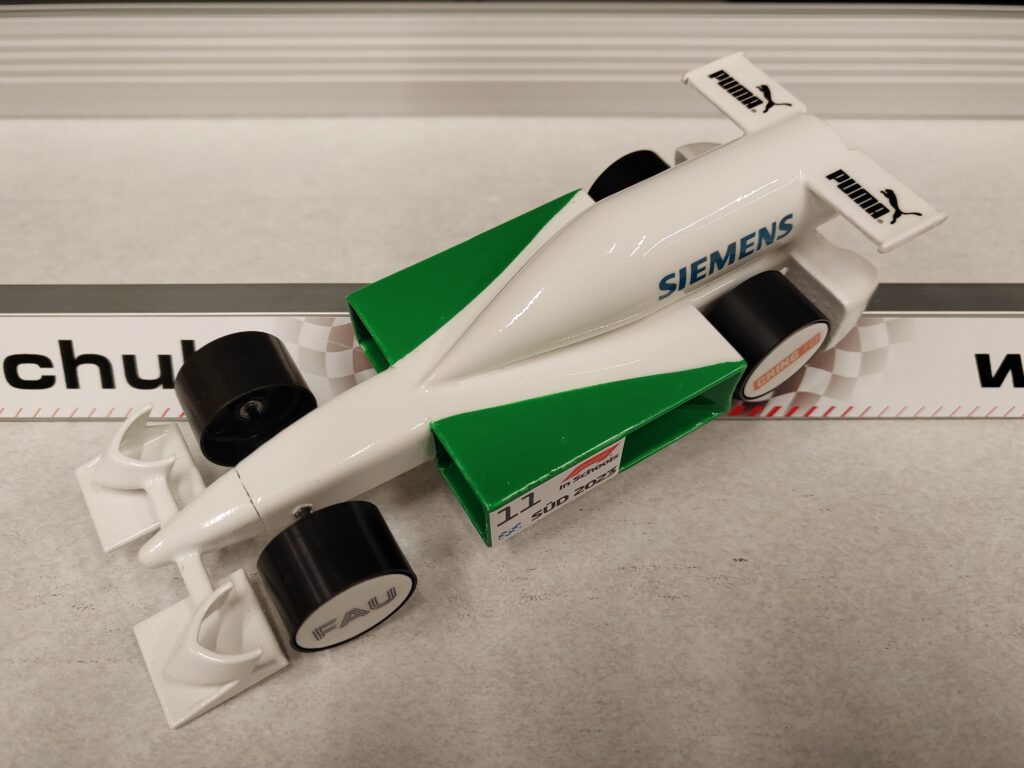
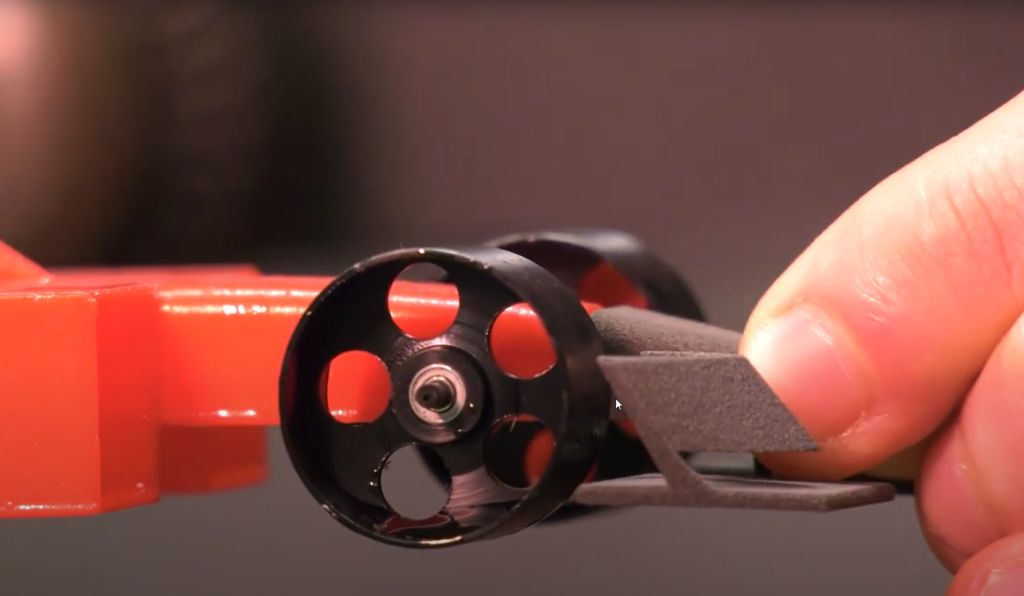
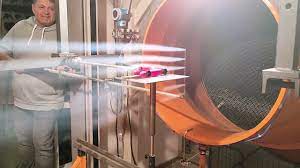
“F1 in Schools is a great example of how different disciplines can be combined in order to let the students experience the big picture,” says Martin Sauer, Physics teacher at Marie-Therese.”Theoretical knowledge becomes a practical experience, teamwork is tied to presentation techniques, economic understanding, and customer orientation, which are difficult to convey in class.” Motivation and orientation are required at the interface between school and professional life. The pleasingly high number of STEM initiatives that now exist nationwide are working in precisely this direction. F1 at schools focuses on the playful side. Gittinger: “The contest is a multidisciplinary, international technology competition in which students design, manufacture, and race a miniature Formula 1 racing car on the computer. The fascination and worldwide presence emanating from the “big” Formula 1 is used to create a motivating, exciting learning experience and to arouse enthusiasm for technology and the environment in which technology takes place in the modern corporate world.”
Siemens has the students’ back’s
Siemens supports the contest as part of their partner school program. Michael Sigmund, Head of Regional Office Erlangen/ Nuremberg at Siemens: “I was really amazed by the professional team presentation I just saw. For Siemens, it is important to support such initiatives not only ideal but also with a budget as this is a perfect example of how to attract young students to grow in the field of technology and innovations.”
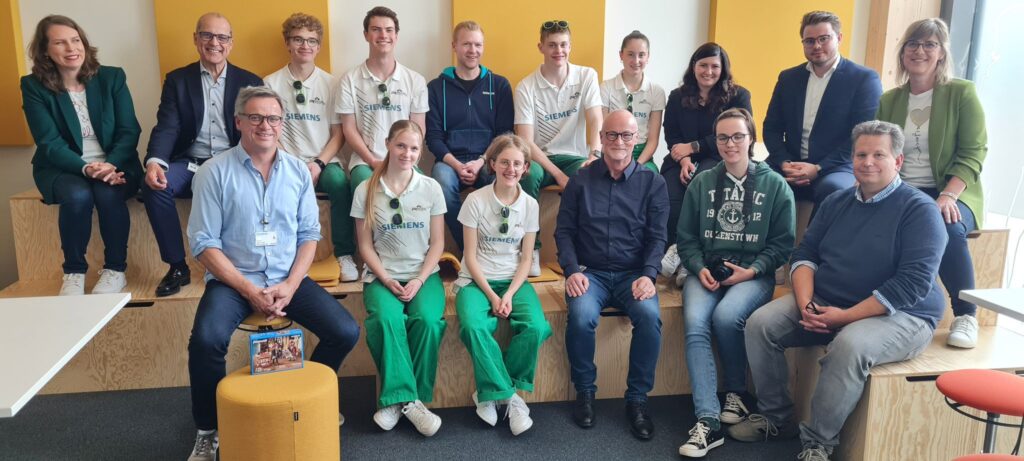
In Germany, all teams are using Solid Edge for their CAD model. Marleen, responsible for the design: “I got to know the software during a summer camp, but I got even more involved in the concept of design when I became the lead designer of the team last September.” This experience also led her to choose her future career, studying mechanical design. Also, the other team members were influenced in their personal career goals through the competition. Like Amelie, team lead of the group, decided now to study Medical Engineering instead of medicine.
Realizing a sustainable approach though was very important for the students, that’s why they chose their t-shirts to come from green production & their sunglasses to be made out of corn starch. Also, the car itself was 3D-printed with compostable PLA.
To make their model as wind-cut as possible, they tested out different parameters. Benno, head of engineering: “We had the chance to check the aerodynamics of the car in the wind channel of the TH Nuremberg, which was an amazing experience as we saw our Racing Reptile being tested in real life for the first time and were able to further improve our car”. “After analyzing the results of the wind channel, we decided to adjust the design”, adds Marleen. “Now the cartridge chamber and the back wheel wells are elongated and not so steeply.”
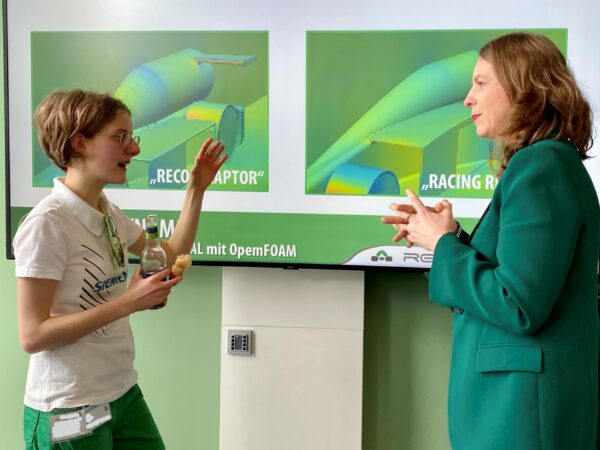
Less than 10% of the evaluation will be counted from the construction, 10% will come from the racing time of the car, and 44% of the points can be reached for the marketing presentation, the team stand, and the enterprise portfolio. So, in the end, just focusing on technic and CAD won’t result in winning the competition, the team also needs to make sure that the judges can comprehend their concept and design.
A win in multiple ways
No matter what team will win the final in the end, Armin is sure, “that F1 in Schools is really the contest that lets the students grow personally and professionally, even when not being on the podium.” After so many years he is still excited as soon as the five lamps give the go-ahead.
His passion for the competition stems from his belief that the “Formula 1 learning experience at school” results in a clear understanding of the importance of technology and its areas of application. In the transition from school to working life, this understanding is a prerequisite for being able to make a conscious and informed decision about a career in a technical profession.
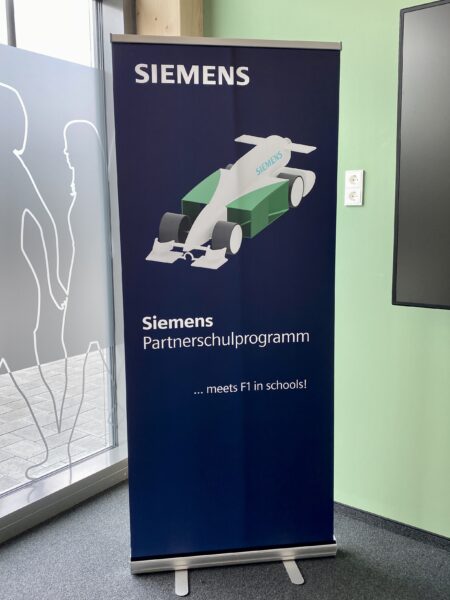
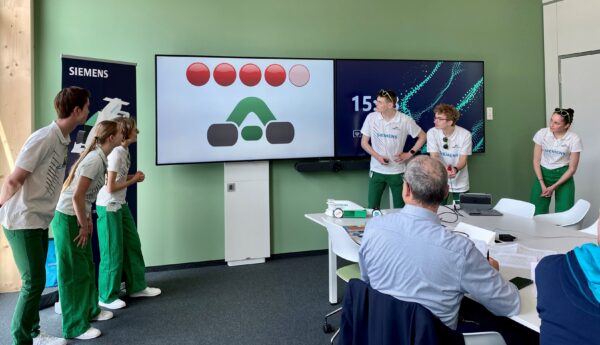
More information about F1 in schools in Germany you will find here.
If you want to know more about the Siemens Partner School Program watch this interview with Christine Benecke, responsible for the support at Marie Therese Highschool.


